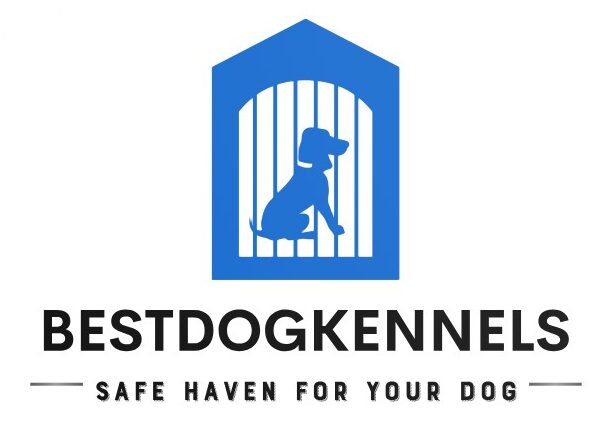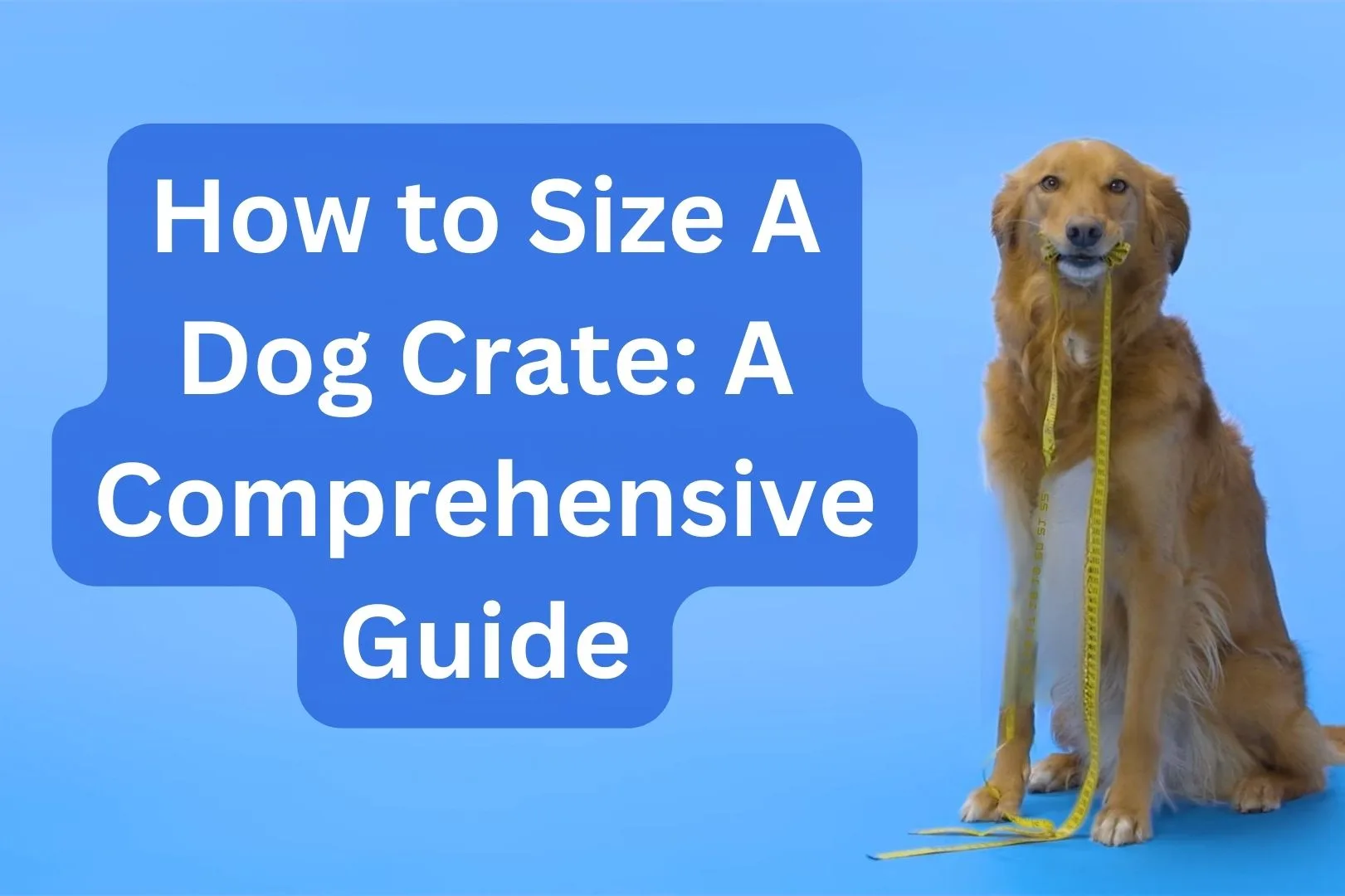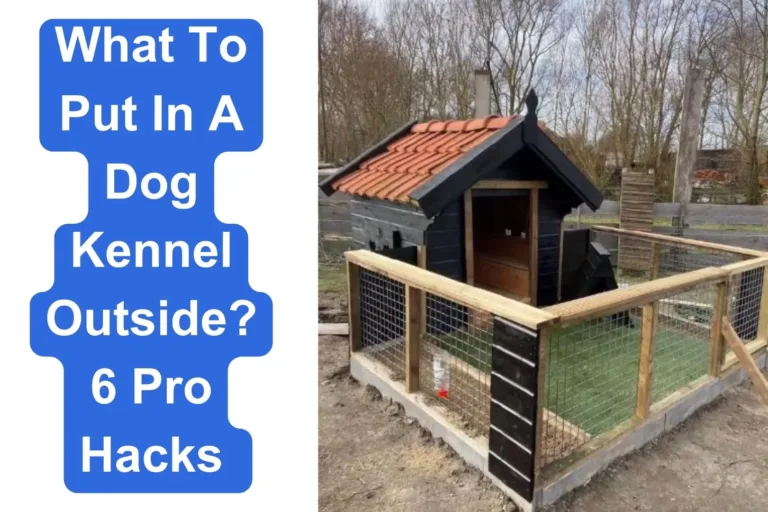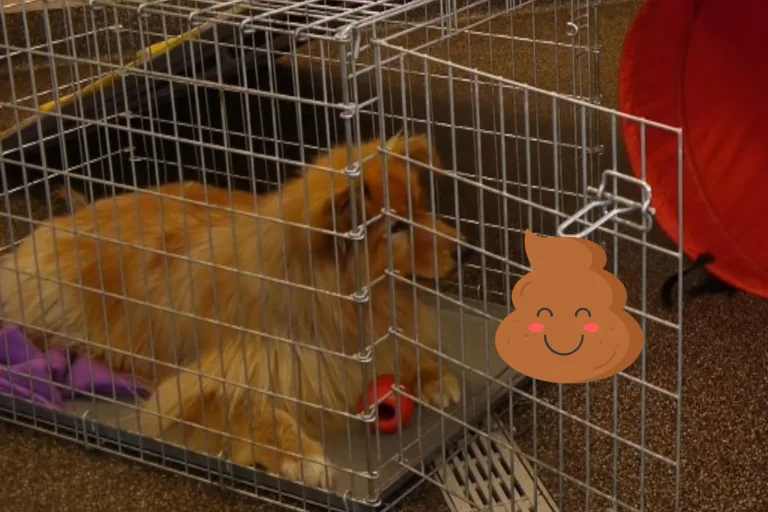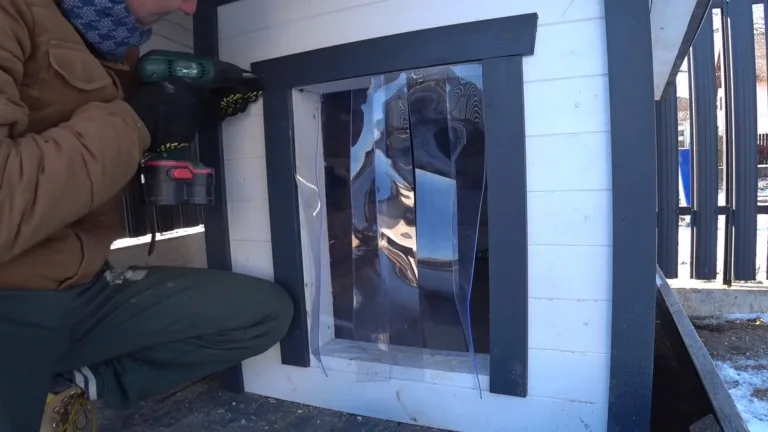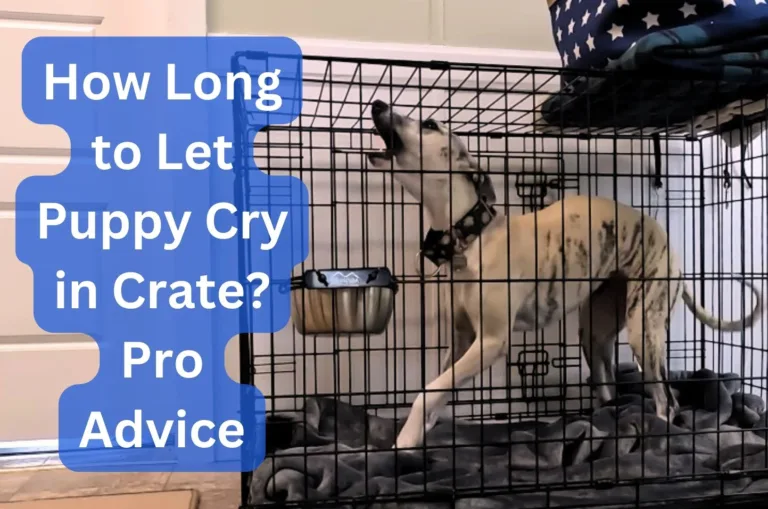How to Size A Dog Crate: A Comprehensive Guide
Getting on the good side of your furry friend isn’t rocket science. Dogs are the fluffy love machines, wired to dish out cuddles and undying loyalty.
And honestly, they totally deserve the VIP treatment in return.
One of the main aspects of dog parenting you need to get off the list is a comfy crate for your furry friend. Trust us; it’s not only a piece of furniture.
A crate becomes your pup’s safe space, aids in training, and saves your furniture from becoming a chewed-up mess. It’s also a handy way to keep your pooch safe while you’re out and about.
But hold up! One size doesn’t fit all in the world of dog crates.
The crate must be large enough for your dog to rest comfortably but not enough for them to turn it into a restroom. Ventilation, durability, ease of cleaning, and safety features are important factors, too. Remember your dog’s temperament, exercise, and grooming needs, and health quirks as well.
Wondering, “What dog crate size do I need?”
We got you!
In this Dog kennel size guide, we’ll cover all the basics of choosing the perfect crate for your dog.
Table of Contents
Understanding the Dog Crate Size
Before we move further in this dog kennel size guide, let’s bust the “crates are cruel” myth.
Dogs are den animals. They love hanging around in enclosed spaces. It makes them feel safe and protected. As long as you don’t use the crate for punishment, all is well!
Now that we’re on the same page, let’s understand more about how big a dog crate should be. The dog crate size chart below will help you get started.
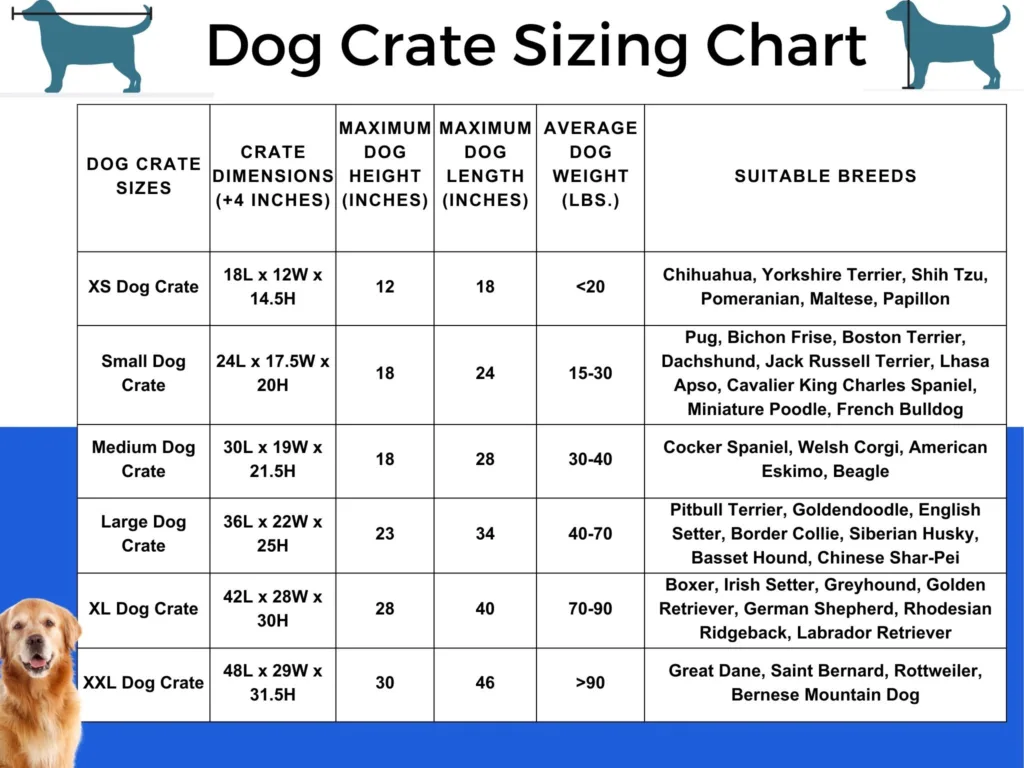
The dog kennel size chart unfolds six crate sizes. There’s one for each breed – from the cutest toy miniatures to the big guys of the doggy world. It’s crucial to pick the correct dog crate size to ensure your pup leads a happy, healthy, and stress-free life.
Still not sure?
Check out our dog crate size comparison in the next section to understand better.
XS Dog Crate Size
An extra small dog kennel size is perfect for the adorable little canines that are 18 inches long (at most) and weigh less than 20 lbs. on average.
Here’s a list of dogs that’ll love an XS crate:
- Chihuahua – weighs 5.1-8.2 lbs. and is 9.5-15 inches long
- Yorkshire Terrier – weighs 6.2-10.2 lbs. and is 12-15.5 inches long
- Shih Tzu – weighs 9-16 lbs. and is 15-17.5 inches long
- Pomeranian – weighs 3-7 pounds and is 9.5-11 inches long
- Maltese – weighs 7-9 lbs. and is 13.5-17.5 inches long
- Papillon – weighs 5-10 lbs. and is 12-17 inches long
Since most of these breeds are playful and energetic, they’d appreciate it if you kept toys and had room for them to move.
Don’t overcrowd their homes, though. A cramped crate space will only add to their anxiety, resulting in problematic behavior.
Small Dog Crate Size
Small dog kennel size is ideal for canines that are approximately 24 inches long and 15-30 lbs. heavy.
If you are a proud parent of one of the following breeds, you’ll need a small dog crate:
- Pug – weighs 14-18 lbs. and is 15.5-20.5 inches long
- Bichon Frise – weighs 12-18 lbs. and is 18-22 inches long
- Boston Terrier – weighs 12-25 lbs. and is 22-24 inches long
- Dachshund – weighs 16-32 lbs. and is 21-25 inches long
- Jack Russell Terrier – weighs 13-17 lbs. and is 18-21.5 inches long
- Lhasa Apso – weighs 12-18 pounds and is 17-20 inches long
- Cavalier King Charles Spaniel – weighs 13-18 and is 19-20 inches long
- Miniature Poodle – weighs 10-15 lbs. and is 15-19 inches long
- French Bulldog – weighs 16-28 lbs. and is 18-21.5 inches long
These breeds are generally loving, gentle, and super playful. However, you must be careful of the crate material you select.
Pugs and Boston Terriers, for instance, are at a higher risk of getting eye injuries. A crate with sharp edges or poor ventilation can be dangerous for them.
Similarly, Bichon Frise and Dachshunds are curious fellows; they’ll need a sturdier crate material to avoid chewed-up wires.
Medium Dog Crate Size
This is the preferred dog house size for medium dogs that don’t get longer than 28 inches and weigh between 30 and 40 lbs.
The medium dog kennel size is perfect for:
- Cocker Spaniel – weighs 16-35 lbs. and is 24-28 inches long
- Welsh Corgi – weighs 34-38 lbs. and is 22-26 inches long
- American Eskimo – weighs 12-35 lbs. and is 21-26 inches long
- Beagle – weighs 20-30 lbs. and is 20-25 inches long
It’s always best to leave extra room for your dog’s growth. Think about their sleeping positions.
Do you have a curler or a straight sleeper? What’s their energy level? Do they enjoy moving around or prefer a cozy spot to rest in?
Cocker Spaniels and Welsh Colgis are prone to eye disorders and hip dysplasia. They’ll need enough room to move around without knocking things over.
Large Dog Crate Size
Next, we’ll look at the large dog kennel size. This one’s a perfect fit for dogs that max at 34 inches in length and weigh between 40 and 70 lbs.
A large dog house size will allow the following breeds to stretch their legs and relax:
- Pit Bull Terrier – weighs 30-60 lbs. and is 18-21 inches long
- Goldendoodle – weighs 50-70 lbs. and is 20-24 inches long
- Border Collie – weighs 30-55 lbs. and is 28-34 inches long
- Siberian Husky – weighs 35-60 lbs. and is 30-34 inches long
- English Setter – weighs 45-80 lbs. and is 30-34 inches long
- Basset Hound – weighs 40-80 lbs. and is 26-34 inches long
- Chinese Shar-Pei – weighs 45-60 lbs. and is 25-29 inches long
You’ll need a durable crate that can withstand the energy levels of these dogs.
Plus, those thick fur coats call for top-notch ventilation, or you might have to deal with skin allergies, heatstroke, and other health hiccups.
XL Dog Crate Size
Let’s address the big guys! The XL dog kennel size is for dogs that are about 40 inches long and weigh between 70 and 90 lbs.
An XL dog house size is a perfect retreat for:
- Boxer – weighs 60-70 lbs. and is 30-35 inches long
- Irish Setter – weighs 60-70 lbs. and is 30-35 inches long
- Greyhound – weighs 55-88 lbs. and is 36-39 inches long
- Golden Retriever – weighs 55-75 lbs. and is 37-42 inches long
- German Shepherd – weighs 55-90 lbs. and is 36-42 inches long
- Rhodesian Ridgeback – weighs 70-85 pounds and is 38-42 inches long
- Labrador Retriever – weighs 55-80 lbs. and is 36-42 inches long
Big dogs, big cuddles, but also big joint concerns. So, make sure the crate has extra room for them to stretch comfortably.
For the majestic fur kings like the Irish Setter and Golden Retriever, good air circulation is non-negotiable, so get a wire crate. We’ve found them to be the airiest.
XXL Dog Crate Size
I have a gentle giant; what dog crate size do I need?
A double XL dog house is your best bet! These large cages are tailor-made for canines, measuring 46 inches long and tipping the scales at over 90 lbs.
Some also come with wheels, making moving them around the house a breeze.
If you have any of these paw-babies, opt for a double XL:
- Great Dane – weighs 110-175 lbs. and is 35.5-43 inches long
- Saint Bernard – weighs 140-180 lbs. and is 40-47 inches long
- Rottweiler – weighs 77-132 lbs. and is 38.5-42 inches long
- Bernese Mountain Dog – weighs 70-115 lbs. and is 35-41.5 inches long
These bigger fur buddies are prone to conditions like arthritis. Add a plush bed to the crate to boost their comfort. Older dogs may have difficulty getting in and out of a high crate, so opt for one with a low entrance.
Breed-Specific Recommendations
In the next section of our dog kennel size guide, we’ll take a closer look at some breeds that require special consideration. If you have one of these, think beyond the dog house size.
Choosing The Correct Dog Crate Size For German Shepherd

What size dog crate do I need for my German Shepherd?
German Shepherds are super active fur babies that require regular exercise to stay healthy. These big dogs are prone to musculoskeletal issues and obesity.
If the German Shepherd dog’s house size is too small, it’ll restrict their movement, causing joint problems.
XL is a suitable dog kennel size for German Shepherd. This German Shepherd dog kennel size will allow enough room for movement and keep your big guy cozy.
The ideal dog house size for a German Shepherd is:
- Length: 42 inches
- Width: 27 inches
- Height: 30 inches
Tailoring Dog Kennel Size for a Golden Retriever and Labrador
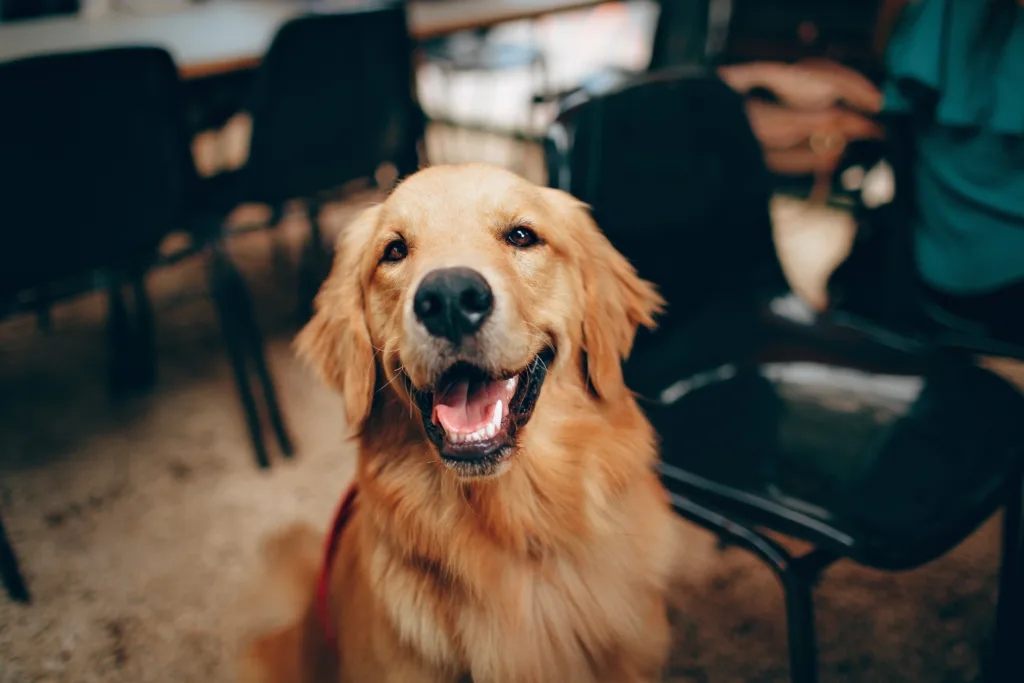
What’s the perfect dog crate size for a Golden Retriever?
Golden Retrievers are among the hyperactive breeds with an overall body length of 37-42 inches. And so, an XL crate is the best choice for them.
Goldens have a dense, water-repellent coat that requires good ventilation to prevent overheating. Choose a wire crate to keep them cool. Even a breathable fabric crate will work if your doggo isn’t big on chewing.
Here’s the ideal dog house size for a Golden Retriever:
- Length: 42 inches
- Width: 27 inches
- Height: 30 inches
What is a good dog crate size for a Labrador?
XL is a decent dog kennel size for a Labrador. These happy-go-lucky pals are energy balls that require mental stimulation to stay fit.
A bored Lab can become hyper and take on destructive behaviors. The Labrador dog house size should be roomy enough for your pet’s toys. You have to keep them entertained!
If you’re a busy bee looking to crate-train your Golden Retriever or Labrador, an XL dog crate size will make your life easy.
Pitbull Dog Crate Size Considerations
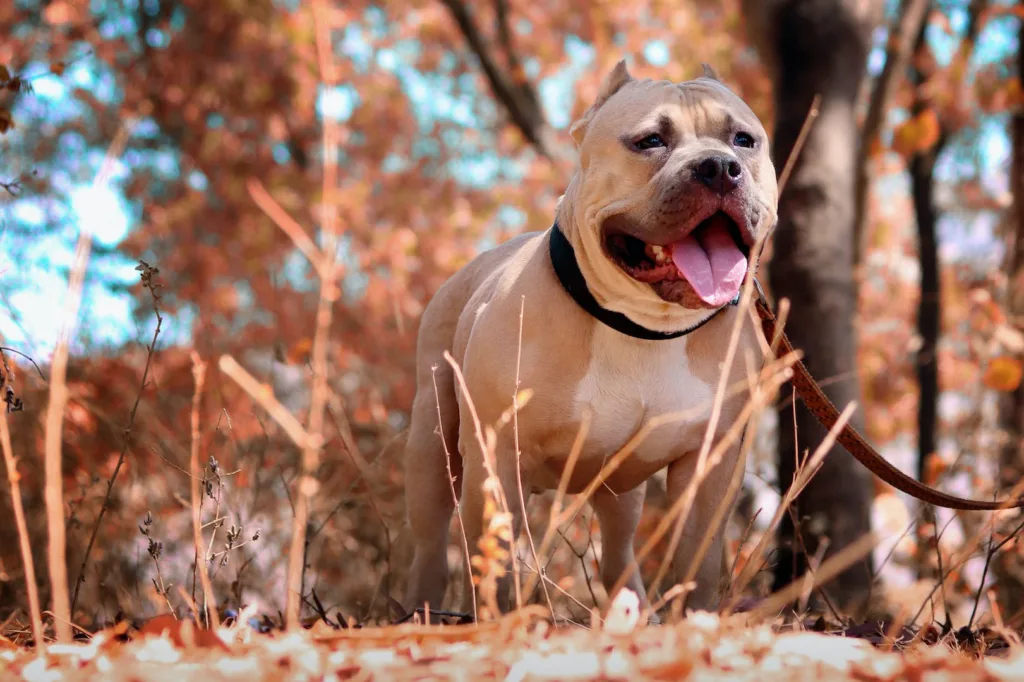
Next, we have the spunky and affectionate Pit Bulls. These lively dogs have big dominant personalities, so crate training is essential. If you’re looking for a permanent house for your pet, a 40 lb. dog crate size is a good choice.
Separation anxiety is a common issue with Pit Bulls. A stressed Pit Bull will pace, bite, and chew furniture. A dog crate will help you manage this behavior.
Choosing the Correct Crate Size for a Rottweiler
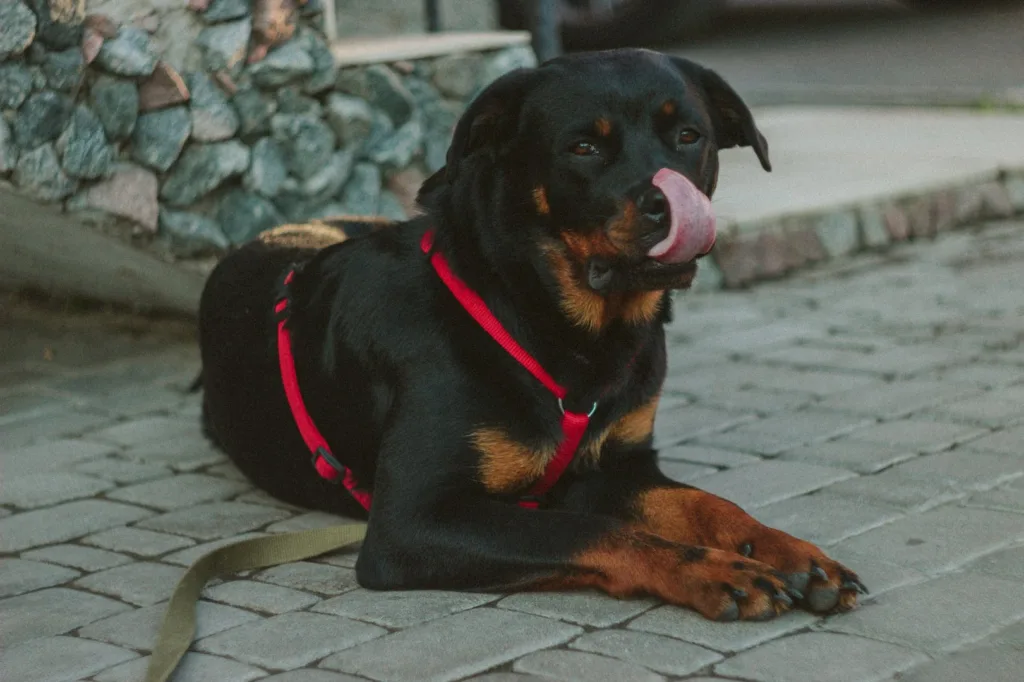
How big should a dog crate be for a Rottweiler?
The ideal dog house size for a Rottweiler is XXL. You can start with a medium crate with removable dividers if you have a puppy. It’ll also come in handy if you’re using the crate for potty training.
Keep in mind that Rottweilers shed tremendously. Therefore, we suggest getting a crate that’s easy to clean. A wire or plastic crate with a removable top is the best option.
Choosing the Correct Crate Size for a Goldendoodle
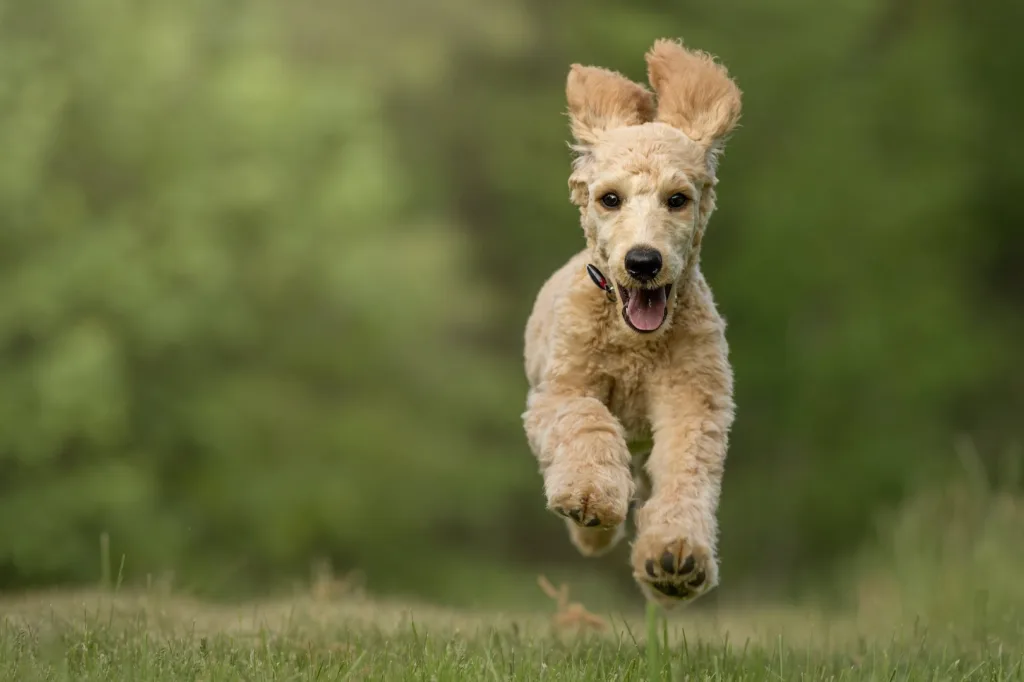
Goldendoodles are a beautiful cross between a Poodle and a Golden Retriever. These fur babies rock wavy, thick coats and a well-balanced body. A large dog crate will be a good pick for Goldendoodles.
Since Goldendooldes are destructive chewers, go for a sturdy wire crate or steel kennel. They’ll last longer and keep your pet safe.
Also, keep in mind their vulnerability to heat. A well-ventilated crate will keep them comfortable. We’ve found that keeping a cooling mat inside the crate is ideal for hot days.
Choosing the Correct Crate Size for a Mini Goldendoodle
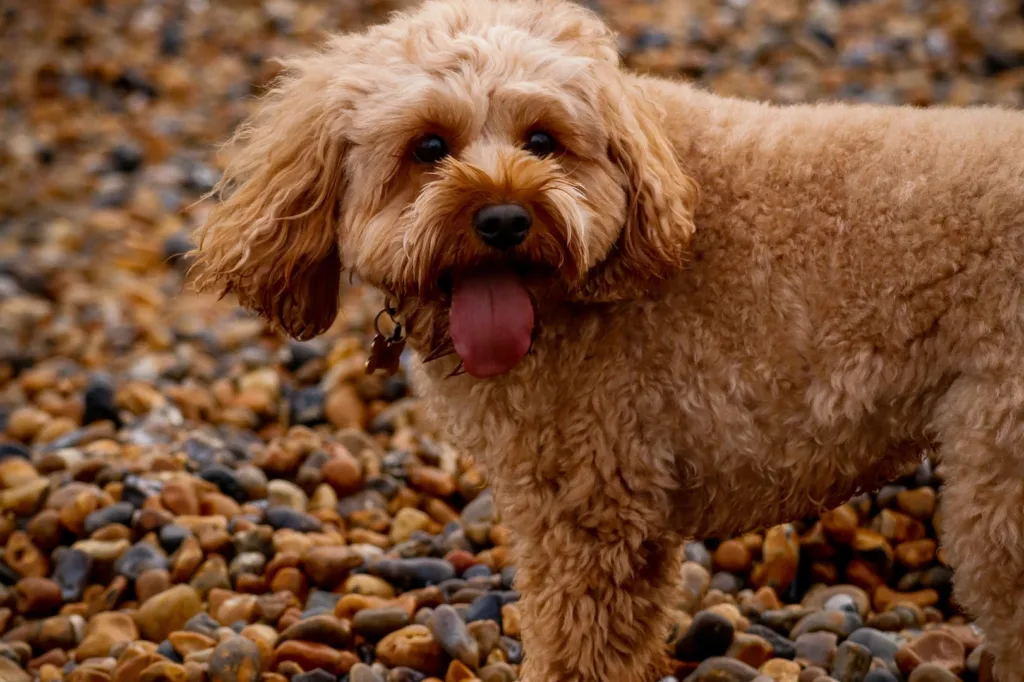
What size dog house do I need for a mini Goldendoodle?
Mini Goldendoodles max out at 17 inches in length and weigh between 25 and 35 pounds. It means they’ll do perfectly fine in a small cage.
These adorable munchkins enjoy being around their humans. If you have a busy lifestyle, it’s crucial to crate-train your mini Goldendoodle. Otherwise, this mini, destructive chewer will wreak havoc on your furniture.
Choosing the Correct Crate Size for a French Bulldog

What size dog house do I need for a French Bulldog?
French Bulldogs will do well in a small dog house. Since these friendly dogs enjoy relaxing as much as playing, they’ll spend a good time chilling in their dog crate. Make sure you add a comfy bed and some toys to the mix.
It’s important to note that French Bulldogs have a Brachycephalic skull shape. It makes them prone to breathing issues. They are also severely heat-sensitive.
For this reason, we recommend getting a crate that allows sufficient air circulation and doesn’t trap heat. A wire crate or a plastic one with good ventilation will do the job.
Choosing the Correct Crate Size for an Australian Shepherd
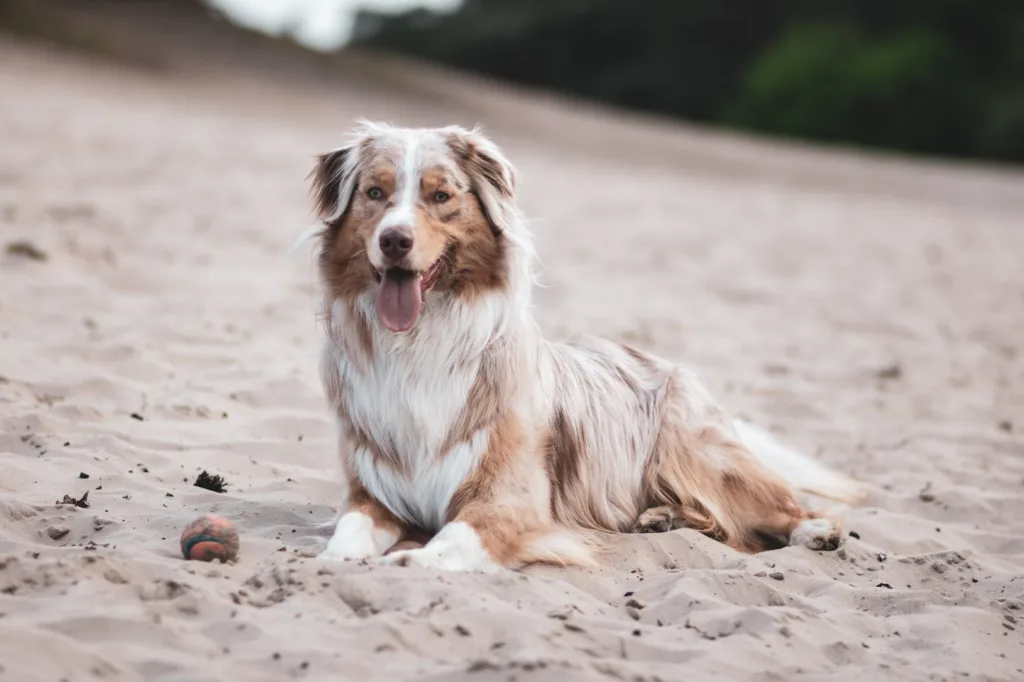
Australian Shepherds are active dogs that reach their full height within a year. These beauties get as high as 18-23 inches, as long as 28-36 inches, and as heavy as 37-70 lbs.
As per those numbers, you’ll need a large or an XL crate for your Australian Shepherd.
It takes about six months to train these strong-headed canines. So, it’s best to start with a large crate.
Aussies have a thick double coat, making them prone to heat strokes – get a crate with good ventilation.
Choosing the Correct Crate Size for a Corgi

How big should a dog crate be for a Corgi?
Corgis are strong, athletic dogs that are easy to train. Since they max out at 26 inches of overall length, a medium crate will suffice.
As per their coats, Corgis are moderate shedders with a dense undercoat that repels water. It’s essential to keep them cool during hot weather. A cooling mat is an excellent addition to the crate for those warm days.
Corgis can be timid around strangers. If you want your pet to be comfortable, get a house with a detachable cover.
Choosing the Correct Crate Size for a Beagle
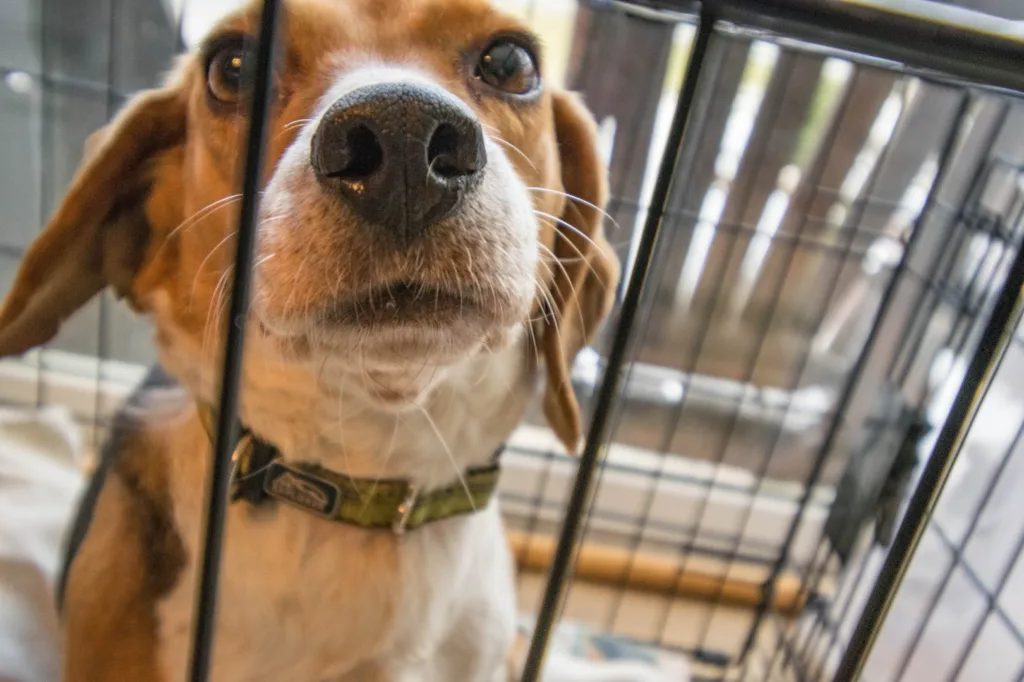
What’s the preferred average dog house size for a Beagle?
Beagles, the happy-go-lucky scent hounds, have an average body length of 18-20 inches. A medium dog house will be the perfect size for your Beagle.
Beagles are curious and playful fellows, so give them enough room for movement and a little playtime in their crates.
Get a medium-sized hard plastic or wire crate if you’re crate training a puppy. The youngest are the most brutal chewers, so fabric crates don’t stand a chance.
Beagles develop back, spine, and neck issues with age. In this case, soft-sided crates will be the comfiest option.
Choosing the Correct Crate Size for a Husky
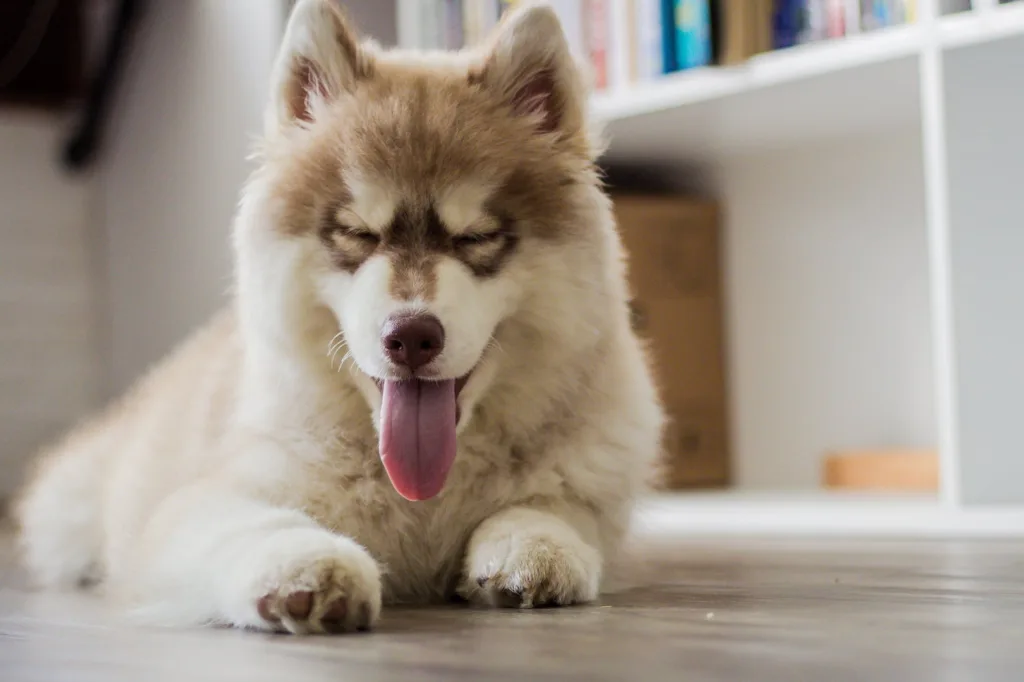
What’s the right dog house size for a Husky?
The Husky dog house size we recommend has a dimension of:
- Length: 36 inches
- Width: 22 inches
- Height: 25 inches
These outgoing and social dogs are pretty darn good at chewing. And with those powerful jaws and strong bite force, they will turn a fabric or soft-plastic crate into a chewed-up mess. Huskies also shed a lot, so it’s best to get a steel crate with a removable top.
Huskies are escape artists, too! Make sure the crate is sturdy and has secure locks. You can also add a padlock if necessary.
Choosing the Correct Crate Size for a Cockapoo

What size kennel should I get for my dog?
Standard Cockapoos weigh about 25-65 lbs. and get about 15-18 inches tall. Getting a large crate for these intelligent and social pups will easily last you into adulthood.
Cockapoos have furry coats, making them heat-sensitive. If you don’t want to deal with excessive drooling and panting, get a dog house with good ventilation. A large wire crate or a soft-sided one with mesh windows will do wonders.
Choosing the Correct Crate Size for a Boston Terrier

What size dog crate do I need for a Boston Terrier?
Boston Terriers are small, high-energy dogs fit for a small and sturdy metal dog house. Scroll up to refer to their size and weight specifications in the first section of our dog kennel size guide.
These cute guys are hesitant to get in the crate initially. So, if you’re hoping to make them comfortable with their new house, you’ll need a lot of delicious treats and persistence.
Boston Terriers have big, bulgy eyes that are prone to injuries. And so, it’s imperative that you tick crates with sharp edges off your wish list.
Choosing the Correct Crate Size for a Great Dane
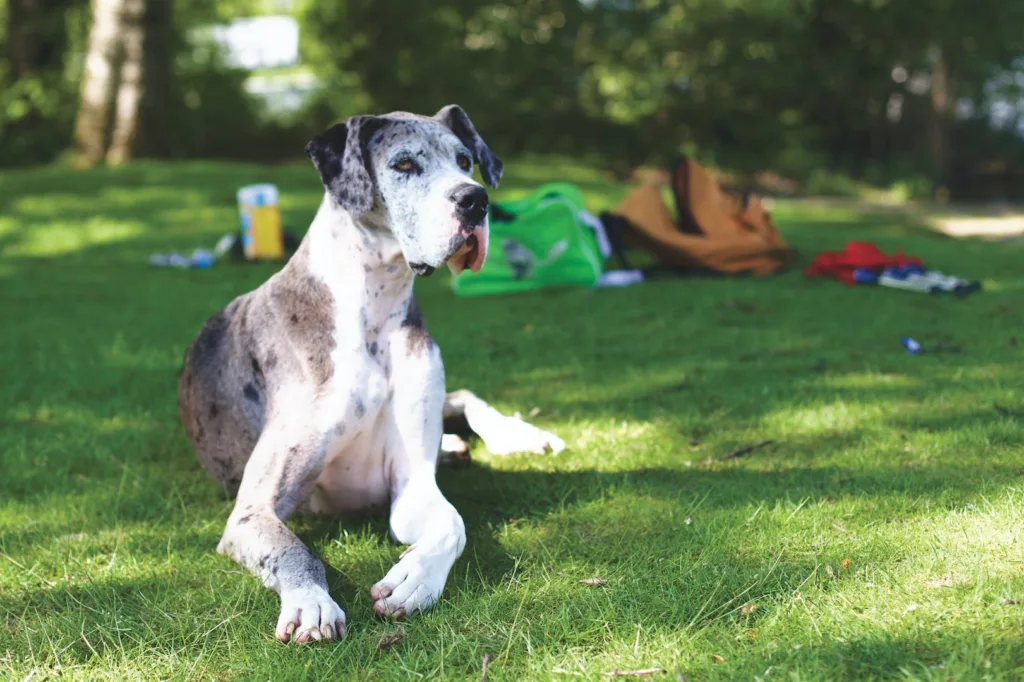
Say hi to one of the biggest dogs out there, the majestic Great Dane! There’s no doubt that a XXL heavy-duty cage is what these dogs need.
Remember that Great Danes grow super quickly! If you’re getting a pup, get an XL crate with dividers so you can adjust the size according to their growth rate.
Great Danes are prone to bloating and digestive issues. So, put health first and ditch wooden or fabric crates.
Choosing the Correct Crate Size for a Cane Corso

How big should a dog crate be for a Cane Corso?
A Cane Corso is a well-muscled dog with a big head. These beautifully intimidating pups reach up to 25-28 inches in height and weigh around 90-120 lbs. An XL or a XXL dog house is what you need.
If you’re starting with a pup, get a large crate and upgrade to a bigger one later. These dogs are slow growers.
Also, a Cane Corso will chew on everything in sight. Pick a steel or wire crate for a long-term solution.
Choosing the Correct Crate Size for a Dachshund

Doxies are naturally curious and restless dogs. If you keep them in a cramped space, these guys will harm themselves.
So, what size kennel is best for my dog?
Get your Doxie a small, sturdy crate with soft bedding for maximum comfort. This breed rocks long bodies on stout legs, making them prone to back issues.
They also have a reputation for giving their owners a tough time with training. We’ve found crates with locks and dividers to be handy when dealing with these escape artists.
Once again, make sure the crate is well-ventilated and has good airflow. Dachshunds are sensitive to heat and cold.
Choosing the Correct Crate Size for a Yorkie

Yorkies are tiny bundles of playfulness and love! They’ll love an XS crate that’s easy to get into. If you’re considering one with a lifted lip at the door, drop the idea!
Yorkshire Terriers are prone to a kneecap issue known as Luxating Patella. Some might even get a degenerative hip condition or be dealing with hip dysplasia.
In these situations, you’ll need a crate with a wide opening. It’ll help your fur baby to get in and out of it without much trouble.
In our experience, a breathable fabric crate with a detachable wash cover and a well-ventilated mesh works wonderfully with Yorkies. It’s a plus if you find one that’s scratch-resistant.
Choosing the Correct Crate Size for a Doberman
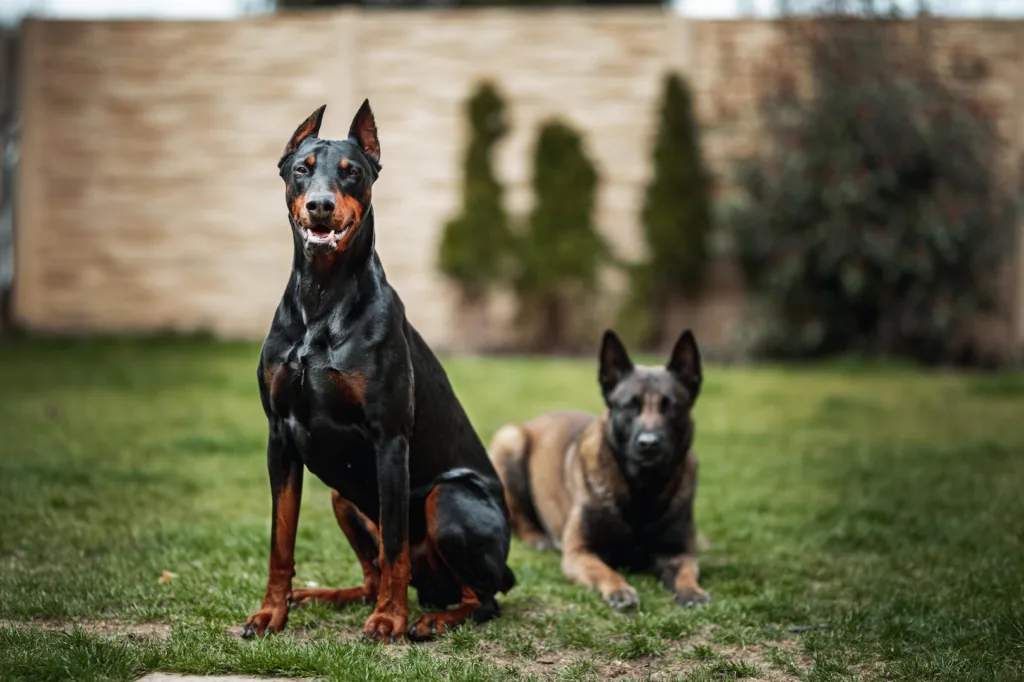
What size dog house do I need for a Doberman?
Dobermans are well-built, large dogs that grow to a massive height of 26-28 inches and weigh between 75 and 110 lbs.
If you’re wondering, “What size crate is best for my dog?” We recommend getting an XXL crate with adjustable dividers. Since these dogs are powerful, heavy-duty steel and wire crates will be best for them.
Like most dogs, hip dysplasia is a common cause of concern in Dobermans.
If you’re dealing with a similar problem, it’s best to opt for a crate with a raised bottom and padded flooring. This will provide your dog with the necessary support and comfort they need.
Choosing the Correct Crate Size for a Cocker Spaniel

A Cocker Spaniel is a dog fit for a medium-sized crate. These fluffy-eared charmers reach their full height by their first birthday and continue to gain mass over the years.
And so, we’ll recommend starting with a medium crate right away.
Don’t get a fabric one, though. Cocker Spaniels might look innocent with their soulful eyes, but when it comes to chewing, they’ll rival a Husky. Get durable, sturdy crates with good locks.
Cocker Spaniels are prone to ear infections due to their long ear flaps. So, make sure the crate is well-ventilated and doesn’t accumulate moisture.
Choosing the Correct Crate Size for a Miniature Schnauzer
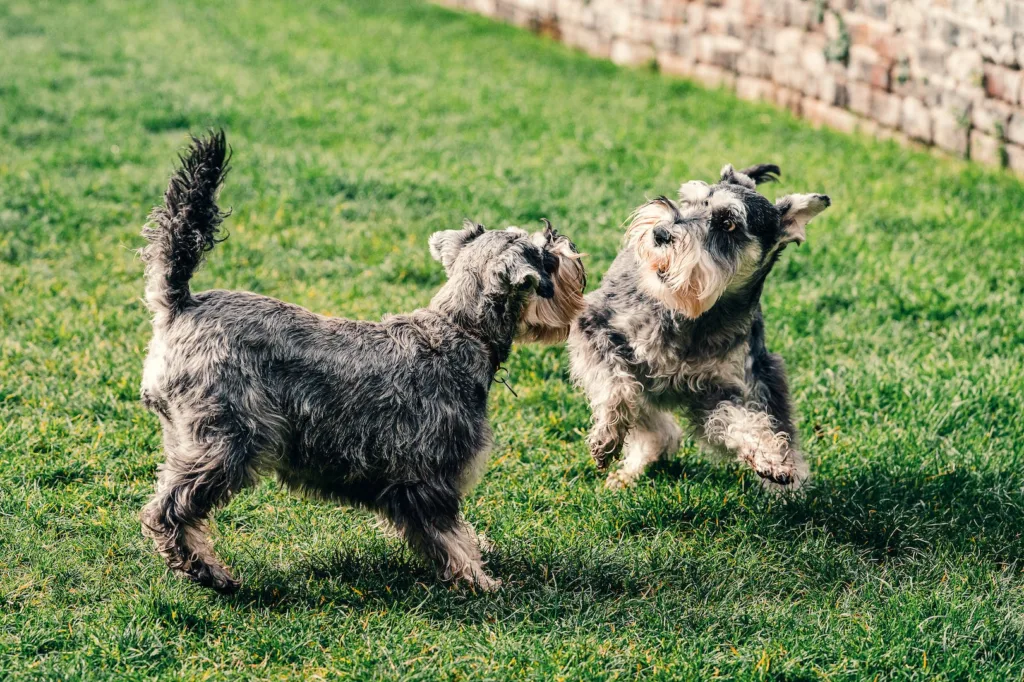
How big should a dog crate be for a Miniature Schnauzer?
Standing tall at 12-14 inches, with 10-18 pounds of maximum weight, Miniature Schnauzers are fit for a small dog house.
These stocky and robust dogs are bearded cuties with sensitivity toward heat. Dental issues are another health quirk that’s common among them.
So, make sure the crate you pick is well-ventilated and has soft bars. How about an airline crate?
Choosing the Correct Crate Size for a Shiba Inu
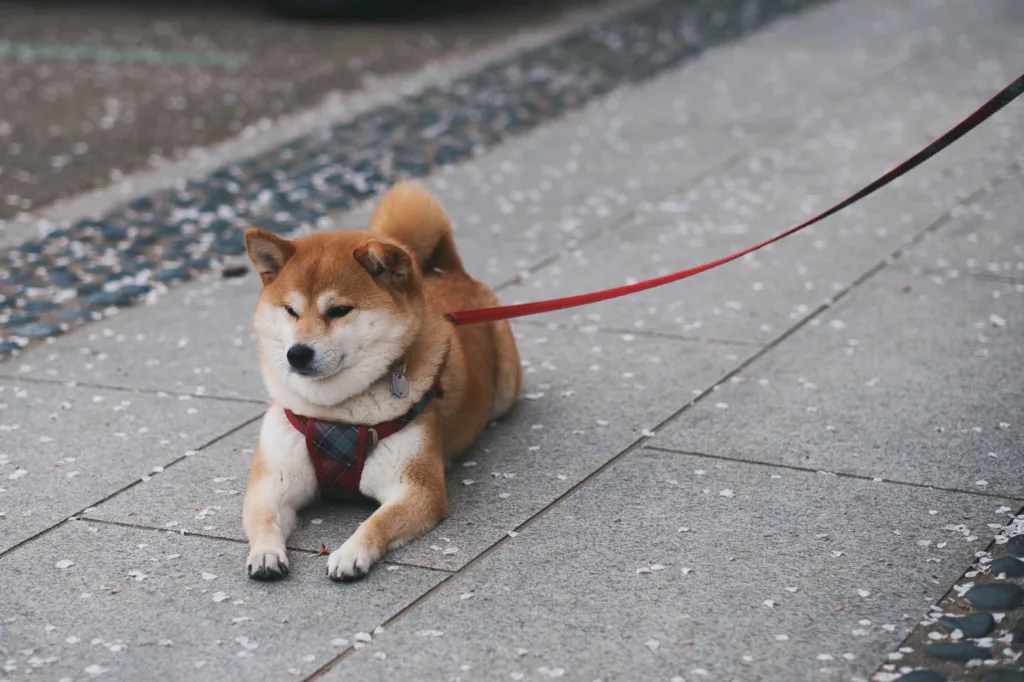
Shiba Inus are spirited and independent dogs with an innate love for digging and burrowing. They are 23-28 inches long and reach a maximum height of 21.5 inches – perfect for a large crate.
However, while selecting a crate for this breed, keep in mind their high energy levels and strong jaws. Opting for a heavy-duty wire or steel crate will ensure your Shiba Inu stays safe.
Since a Shiba Inu sheds fur year-round, make sure the crate is easy to clean and has a comfortable bed for your pup to snuggle into.
Choosing the Correct Crate Size for a Boxer

What size dog crate do I need for a Boxer?
Boxers, the goofy, good-at-heart dogs, are energetic and playful. Give them an XL dog house, and they’ll be merry.
Boxers are prone to hip and joint issues. Get them a crate with good support for their spine and joints. They are also known to have sensitive skin and allergies, so avoid fabric crates that can accumulate allergens.
We recommend opting for a crate with rounded edges and bars to prevent any injuries while moving around in their crate.
Choosing the Correct Crate Size for a Mini Dachshund
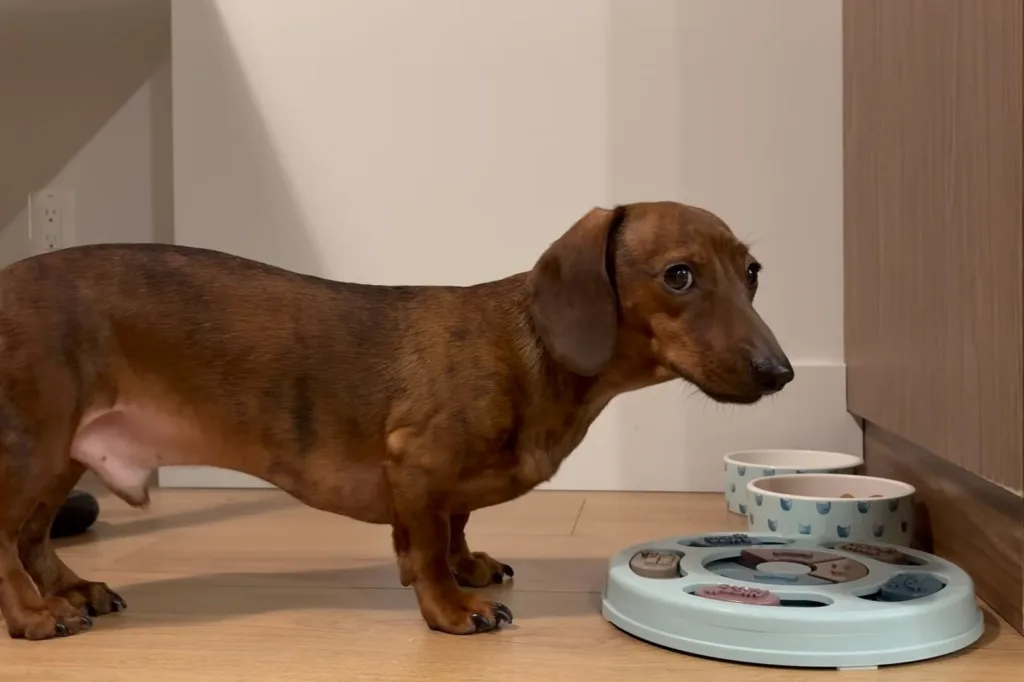
What size kennel is best for my dog if it’s a Mini Dachshund?
Small dogs, big grace! A Mini Dachshund will get only 6 inches tall and tip the scale at a mere 11 pounds. They are tiny dogs, perfect for fitting into an extra small, cute crate!
Since they have long bodies and short legs, avoid high platforms. Make life easy for your Mini Doxie.
Choosing the Correct Crate Size for a Shih Tzu

What size dog house do I need for a Shih Tzu?
An extra small dog house with soft walls and bedding will keep your Shih Tzu feeling cozy and secure. Shih Tzus, the adorable fluffballs, aren’t big on chewing. So, you can get away with a fabric dog house with good ventilation.
These guys enjoy digging, so stuff the crate with a comfy mat. It’ll keep them entertained and prevent boredom.
Choosing the Correct Crate Size for a Mini Aussie
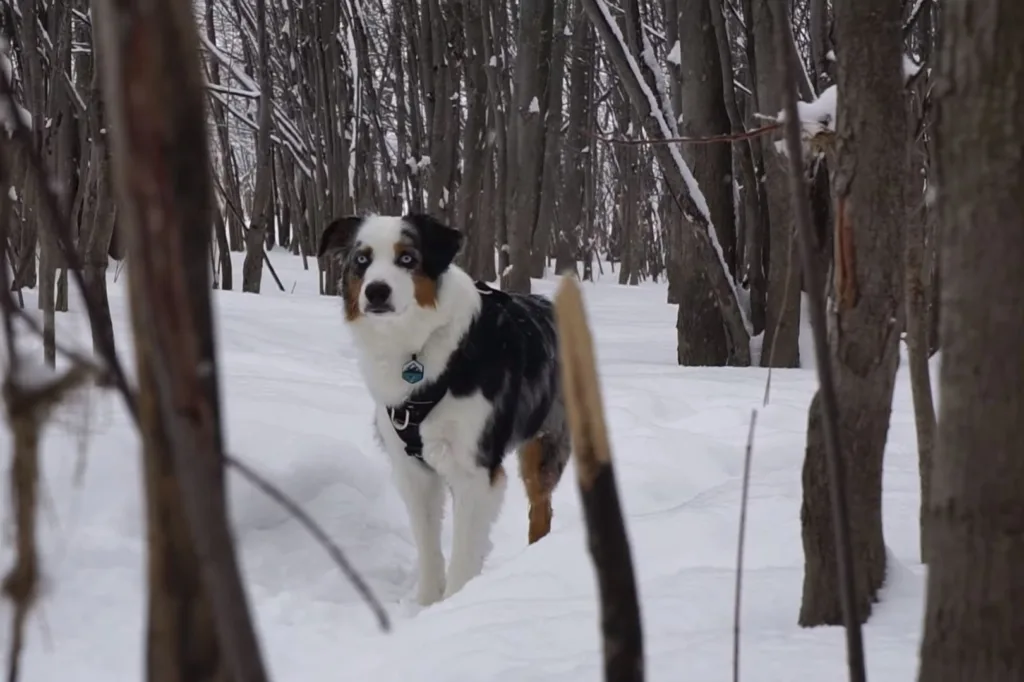
What size kennel is best for my dog if it’s a Mini Aussie?
Mini Aussies don’t get taller than 18 inches. They also max at 35 pounds. When shopping for their house, get a medium one with adjustable dividers.
These bundles of energy are known for their love of running and jumping, so get a durable crate that can keep up!
For Mini Aussies dealing with anxiety, opt for a soft-sided crate with calming pheromones and a cozy bed. A snug space to retreat to during stressful situations will be perfect for these sensitive pups.
Choosing the Correct Crate Size for a German Shorthaired Pointer

How big should a dog crate be for a German Shorthaired Pointer?
Weighing between 55 and 70 lbs., a German Shorthaired Pointer struts at 25 inches and stretches to 34-41 inches. For their dream digs, we recommend an XL crate.
Since German Shorthaired Pointers are prone to separation anxiety, help them beat the blues with a wire or steel crate with a covered top. It’ll help them feel secure.
Choosing the Correct Crate Size for a Great Pyrenees
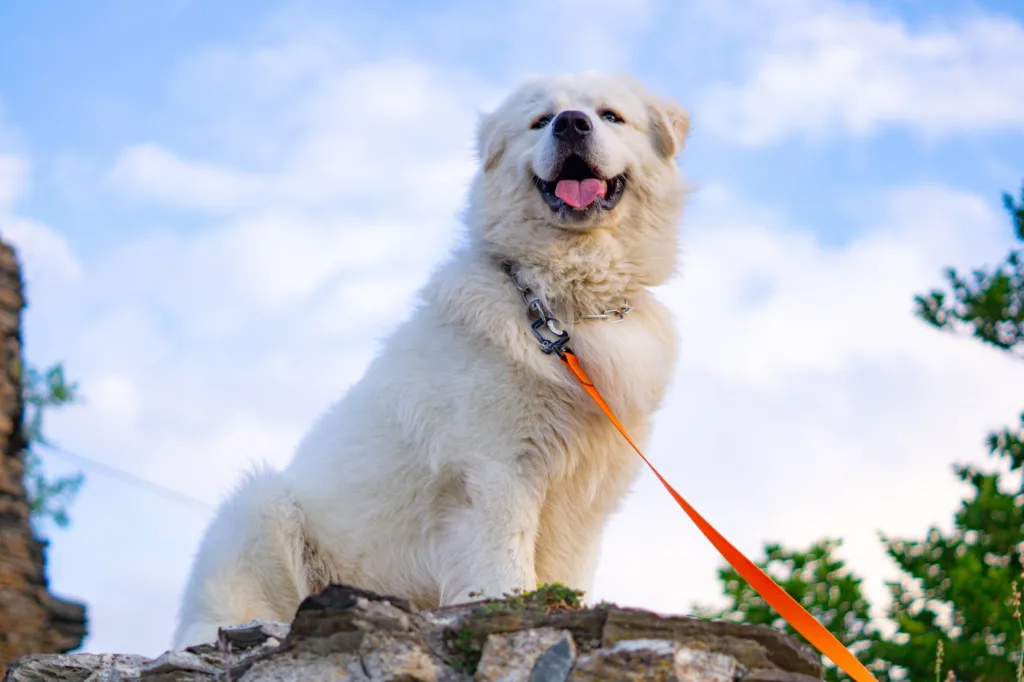
What size crate is best for my dog if it’s a Great Pyrenees?
The largest dog on our list, the Great Pyrenees, rocks a 32-40.5 inches tall body that stretches to a phenomenal 40.5-52.5 inches.
These big guys tip the scale at 110 pounds. If you are a proud parent, you’ll have to get a custom crate for these fluffy giants.
The Great Pyrenees dog house size should measure at least 54 inches. No issues with the material; they’re pretty calm and well-mannered babies.
However, health issues like hip dysplasia might call for a raised bottom.
Selecting the Right Crate: Step-by-Step Guide
Nothing says love like ensuring your furry sidekick lives his best doggo life with you. And so, you can’t snag just any old crate off the shelves and call it a day.
There are a few important factors to consider when choosing the right dog crate size for your fur baby.
In this section, we’ll explore the step-by-step guide to selecting the perfect crate for your pet.
How to Choose a Dog Crate Size
As highlighted, there are 6 main sizes of dog houses available in the market. They range from XS to XXL.
But what dog crate size do I need?
To get the answer, you must understand more about your pet. From the basic information like their weight, height, size, and width to their temperament, possible health concerns, and exercise needs – asses it all.
It’s best to size up but leave room for growth. It’s especially true if you’re bringing home a puppy.
Dogs grow fast, and even if they’re full-grown, it’s only wise to get a crate slightly bigger than their current measurements.
Other factors that you must keep in mind include:
- Comfort – The crate must feel snug and safe for the pooch. He must be able to stand, sit, lay down, and turn comfortably but not have too much extra space to run around and hurt himself.
- Durability – If you’re investing in a heavy-duty dog house size like an XXL crate, you’d want it to last a long time. Choose materials accordingly. We’ve found wire crates to be the most durable. If you have a chewer, we recommend investing in a steel crate. Although it’s on the pricier end, the durability trumps the cost-saving.
- Portability – A foldable crate is ideal if you’re always on the go with your pet (lucky you!). They’re lightweight, easy to set up and take down, and easily fit in your car.
- Ease of Cleaning – Dogs are messy. And especially if you have a puppy, accidents are bound to happen. So, make sure the crate is easy to clean and maintain.
Importance of Measuring Your Dog
Like humans, dogs like their homes to be comfy and safe. They use it to rest, stay warm, give birth, and hide from loud noises – it’s their haven.
An oversized crate will make your canine friend feel vulnerable and exposed. That’s exactly the opposite of what they need.
On the other hand, an undersized crate will restrict their movement and increase their chances of developing health issues like joint pain and muscle stiffness. Therefore, it’s a good practice to measure your dog before buying him a new place.
Measuring your dog will also take the guesswork out of the equation. Who wants to play Goldilocks with their pet’s crate size? Not us!
What Size Dog Crate Do I Need for My Dog?
The answer to your question, “What dog crate size do I need?” question is measuring your pooch correctly.
First, let’s reiterate – never eyeball it! This is an ill-advised practice that will lead to a poorly fitting crate.
A crate that doesn’t fit your dog’s needs will backfire. It’ll lead to behavioral and health issues.
Refer to our dog crate sizes by breed section to know which crate size will be the best fit for your four-legged BFF.
How to Measure Your Dog for a Crate the Right Way
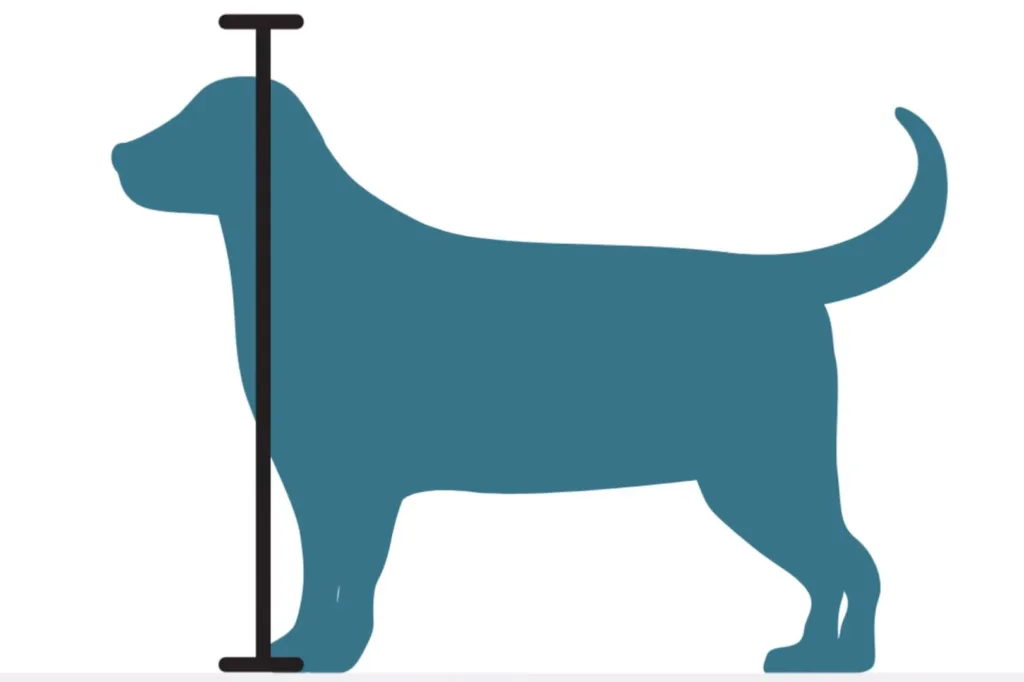
There are 3 main measurements that you need to take:
- Length – Measure from the tip of your dog’s nose to their tail.
- Height – Measure from the top of their head or tips of the eras (choose the higher point) to their paws while standing.
- Width – Measure the width of your dog at his widest point, usually at the chest or shoulders
Once you have your measurements, add 4 inches to each, and voila! You have your perfect crate size.
Crate Size Recommendations for Puppies and Training
Puppies are growth champs. Therefore, their dog kennel size requirements will constantly change.
As a rule of thumb, choose crates that’ll fit your pup when he’s an adult and use dividers to section it off while crate training.
If you’re unsure of your pet’s adult size, you’ll have to get a cage for each phase of their lives.
Think about your pup’s potty training and teething escapades. Get an easy-to-clean crate made of tough material so it doesn’t succumb to little teeth.
General Crate Information
Raising a dog is a commitment that requires a lot of love, patience, and attention. Choosing the right crate is just another task on your never-ending to-do list – but don’t worry; we’ve got you covered!
In this section, we’ll cover all the general information that you must know before purchasing a crate for your pet.
Crate Dimensions and Comfort
The whole point of crate training is to provide your canine with a safe and comfortable space. Smart dog parent tip – buy a crate that’ll accommodate your pet when he’s fully grown. It’ll save you the hassle of buying new crates every few months.
Crate Suitability for Various Dog Breeds
From the dog house size for a Labrador to the Golden Retriever dog house size, our detailed dog kennel size guide has all the answers to your “What size crate is best for my dog?” question.
Save the page so you can easily refer to it when you’re ready to add a pup to your family.
Crate Measurements for Training Purposes
How to size a dog house for training is a question that plagues many new pet parents.
You want to give your pooch the best experience. But remember, when it comes to crates and training, bigger does not equal better. A dog crate should be appropriately sized for your dog – not only for comfort but also for effective results.
Portable Dog Crate Dimensions for Travel
What size crate is best for my dog when traveling?
The key is to keep your furry friend comfortable. They shouldn’t feel hot and trapped.
As a rule of thumb, get 4-6 inches more than their current measurements. For long trips, take frequent breaks and let them stretch and relieve themselves.
Crate Size and Considerations for Multiple Dogs
What’s the right dog house size for 2 dogs? And how to measure a drop crate for multiple dogs?
According to research, a standard dog requires 100 sq. ft. of space to stay comfortable and healthy.
With multiple dogs, you’d want to use the same formula – 100 sq. ft. per pup. If you get a crate that’s too small, it’ll lead to resource guarding and territorial behavior between your furry friends.
Selecting an Appropriate Crate for Different Life Stages
How to size a dog house for different stages of my dog’s life?
Honestly, dog crates come with a price tag you don’t want to see twice!
So, to save you some money, we suggest buying a large crate and using dividers for puppies. As your dog grows, gradually increase the space by removing the divider.
In addition to saving money, this method is also great for potty training purposes, as it restricts movement and minimizes accidents.
Wire Crate Sizing Guidelines
Wire crates are like the Swiss Army knives of crates. They are sturdy, durable, and airy – perfect for most breeds. We won’t give it many points on the aesthetic appeal, though.
How to size a dog wire crate?
The sizing guidelines remain unchanged for wire crates.
Measure your dog using our guide, add 4 inches (or 6 if you want to follow USDA’s rule of thumb) to each measurement, and pick the right size.
In addition, wire crates come in different designs with varying numbers of doors for easy entry and exit.
Dog Kennels and Houses
Dog kennels are dog houses that are fit for outdoor use. They are bigger than crates and have enough open area for your dog to roam around, play, and relax. They even have that slanted rooftop – how adorable.
Dog Kennel Size Considerations
Kennels have two dominant areas: the run and the shelter.
In most cases, you won’t need to worry about the size of the run – unless your dog is a sprinter or an ‘I-beat-Usain-Bolt’ type digger.
The shelter, on the other hand, is where you need to focus. Measure your dog as instructed and add 4-6 inches to each measurement.
Ideal Dog House Dimensions
Here are some common kennel sizes for your convenience:
- Small – 6 x 3 ft and 12 x 4 ft. Yorkies, Pugs, Chihuahuas, and Pomeranians will be comfortable in this size.
- Medium – 8 x 6.5 ft and 14 x 4 ft. Cocker Spaniels, Bulldogs, Border Collies, and other medium-sized dogs will have a great time in this kennel size.
- Large – 12 x 8 ft and 14 x 8 ft. These are ideal for dogs like Irish Setters, Labs, Rotties, and the like.
Outdoor Dog House Sizing Tips
When sizing an outdoor dog house, ensure that the door is high enough for your pet to walk in comfortably and wide enough for them to turn around.
Dogs with conditions like arthritis or hip dysplasia may have trouble climbing elevated entrances. Hence, keep the door low and flat.
Indoor Kennel Dimensions and Ventilation
Do you have enough real estate to build an indoor kennel? Lucky dog!
In that case, measure your dog as per our guide and add 4-6 inches to each measurement. Use those measurements to design a kennel that’ll double as furniture and blend in with your decor.
In addition, ventilation is crucial for indoor kennels. Ensure there are enough air holes (about two on opposing walls), or use wire mesh instead of solid panels.
Dog House Size for Various Weather Conditions
When it comes to dog houses in tough weather, there’s more to think about! In hot regions, go bigger for a breezy vibe. In cold regions, get a snugger dog house.
In rainy conditions – you’ll want a roof on the run as well. You don’t want your furry friend getting wet while trying to take a nap!
In addition, consider insulating the shelter to keep your pet warm in winter and cool in summer.
Dog House Dimensions for All Seasons
Planning on getting a doghouse for year-round outdoor fun? Size your pooch as mentioned and take into account the factors discussed above.
You may also want to consider an elevated floor, plastic material, or a heating pad for colder months.
How to Measure a Dog Crate – Explained
You must be wondering, “How to size a dog house?” to avoid the hassle of unnecessary returns and exchanges.
Don’t worry; we have all the answers for you right here.
Step-by-Step Guide on How to Size a Dog Crate
One Size Doesn’t Fit All
Different breeds have different requirements, depending on their size and weight. So, measure your dog before deciding on a crate size.
Scroll back to our dog house size by breed guide to learn more.
Dog Crate Sizing Chart
How to measure a dog crate?
It’s easy-peasy. Use our dog house size chart to find out which cage your pet needs.
Most pet stores sell dog crates by size. If you know your dog’s weight and length, you can easily find the correct size.
Quick Dog Crate Sizing Tips
Keep the following “How to size a dog crate” tips in mind when shopping for your pup’s new home:
- Always measure your dog before purchasing a crate.
- If your dog is in between sizes, size up.
- Consider your dog’s temperament and behavior when choosing a crate size.
- Take into account any possible health concerns or special needs of your dog.
- Choose durable materials that can withstand your dog’s energy levels and habits.
Importance of Considering Wiggle Room
Dogs don’t like being cooped up in a confined space. So, it’s essential to get them a right-sized crate with enough room for them to move around and stretch.
But how much wiggle room is enough?
As a rule of thumb, your dog should be able to stand up without their head touching the top of the crate. They should also be able to turn around comfortably and lie down without feeling cramped.
Planning for Your Dog’s Growth
While learning how to measure a dog crate, don’t forget the growth spurt factor! If you’ve got a pup, think ahead to their majestic adult size.
Opt for a smart, adjustable crate with dividers to accommodate their growth.
Alternatively, you can always add a larger crate to your shopping list for when they outgrow the first one. Just make sure to dispose of the old crate responsibly.
Frequently Asked Questions
What Size Kennel for a 50 lb Dog?
The large dog kennel size works best for a 50-pound dog. What size is a large dog cage? Well, the dimensions are 36″ x 26″ x 24″.
What Are the Guidelines for XXL and 40 lb Dog Crate Sizes?
An XXL cage is a great pick for heavy hitters that weigh 90+ lbs and measure up to 48 inches in length.
Meanwhile, our 40 lb. buddies can cozy up in a medium or large crate (30-36 inches long), depending on their weight and size.
How Do I Know What Size Kennel to Get?
Learn how to size a dog crate, and you’re good to go. Measure your dog from snout to tail, throw in a few extra inches for wiggle room, and you’ve got the size.
How Many Dogs Can Fit in a 10×10 Kennel?
We’ve found that an average doggo requires about 100 sq. ft of space. And so, a 10×10 is good enough for one regular-sized canine.
What is the Largest Kennel Size?
48 inches long is the largest kennel size for a single dog on our list. If you need a bigger one, you can get it custom-made.
Do Dogs Like Big or Small Kennels?
Dogs use kennels as a personal space for comfort and security. They’ll need enough room to stretch, stand up, and move around easily.
So, it’s best to get a kennel that fits their size. An oversized kennel will not retain enough heat, making it tough for your furry friend to stay warm. A kennel that’s too small will make them feel cramped.
What Size Dog Fits in a 24-inch Crate?
Small dogs that weigh between 15 and 30 lbs. and are 22 inches in length will find a 24-inch crate comfortable. Bichon Frises, Pugs, and French Bulldogs are popular breeds that fit into this category.
What is a Standard Dog House Size?
There’s no single standard dog kennel size. However, most breeders and experts recommend crates that are 24-42 inches long for small to medium-sized dogs, 42-48 inches for large breeds, and 48+ inches for extra-large ones.
How Much Room Should a Dog Have in a Crate?
There should be enough room for your dog to sit, stand, change sides, and lie down comfortably. In general, the crate should be at least 4 inches longer and taller than your dog for a cozy fit.
How Many 2x4s Do I Need for a Dog House?
It depends on how big a dog house you’re making. For a regular-size dog house, you’ll need four 2x4s cut into four pieces. Two should be 22.5 inches long, and the other two should be 23 inches long.
How to Size a Dog Crate?
To find the right crate size for your dog, you need to measure your pup for three main dimensions:
- Length – From the tip of the nose to the root of the tail
- Height – From ground to the top of the head
- Width – Measure the widest point of your dog’s body (usually shoulders)
The USDA dog kennel size requirements specify adding 6 inches to each value.
What Dogs Fit in a 36-inch Crate?
Goldendoodle, Pitbull Terrier, Chinese Sha-Pei, English Setter, Siberian Husky, and Border Collie will all fit in a 36-inch crate.
How Big is a 30-inch Kennel?
A 30-inch crate is a medium dog house size. It measures 30″L x 19.5″W x 21.5″H. Dogs that weigh between 30-40 lbs. and are under 28 inches in length will easily fit in a 30-inch kennel.
What Dogs Fit in a 42-inch Crate?
A 42-inch dog kennel size is suitable for big guys like Golden Retrievers, Boxers, German Shepherds, Irish Setters, and Greyhounds. It measures 42″ x 28″ x 30″.
Paws and Proportions – Making Your Dog Space Just Right!
Dogs are unique, and so is their size.
In this dog kennel size guide, we learned that every pup has different needs based on their weight, size, health, and personality. And so, they all need a crate that fits them just right.
But why is it so important to get the right-sized crate?
It’s paw-fectly simple: Optimal Fit = Comfort and Safety
An oversized crate can feel overwhelming and lonely for a dog. On the flip side, a crate that’s too small is uncomfortable and can cause anxiety, behavioral issues, or physical injuries.
So, measure your dog from his nose to his tail and from his paws to the top of his ears, and add a comfy 4-6 inches to get the optimal crate size.
We hope this article taught you how to measure a dog crate size like a pro.
Now, it’s time for you to shine as a responsible dog parent and pick the perfect crate for your furry best friend! You got this!
